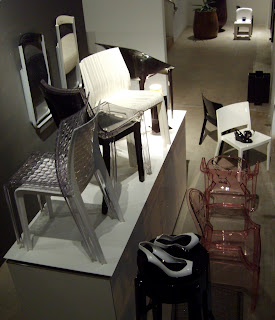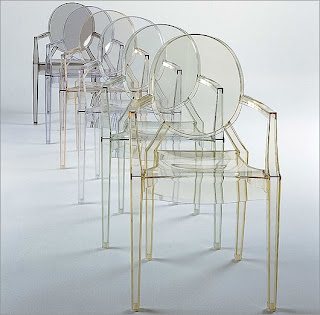by Miyoko Ohtake
To call interior designer Nicole Hollis’s portfolio “eclectic” is an understatement. On one page you’ll find a modern man-cave with a colorful LED-lit staircase and on the next, a rustic kitchen outfitted with copper pots and wicker baskets. Each project has its own merits, but Hollis’s greatest strength as a designer lies in her chameleonlike ability to channel her clients’ desires.
After working for famed Napa Valley architect Howard Backen, Hollis founded her eponymous San Francisco firm in 2003. “I was turning 30 and thought, What do I want to do?” she remembers. “I didn’t have a Rolodex of names but I knew I wanted to do my own thing and had my own vision.” That vision included preserving the craft of carefully curated interiors. “I worry that the art of architecture and design will be lost on today’s disposable society,” she says. “I don’t think there are five easy steps. You can’t just Google ‘the art of living.’ Anyone can pick a chair but is it the right scale, fabric, proportion, weight?”
To successfully design beautiful, functional spaces, Hollis insists that collaboration—–whether with the architects on her staff or out-of-house landscape or audiovisual designers—–is the key. “You can’t ignore architecture; it’s what activates the interior,” she says. Today, however, “everything’s become so specialized,” Hollis says. “You’ve got to collaborate if you’re going to create great interiors.” After all, as she likes to say, it’s not the Nicole Show.
To see more "Young Guns" click here.
January 24, 2011
Rex Ray Displays Artwork at DZINE
Discolaria, 2010
Embudo, 2009
Rex Ray is a San Francisco based fine artist, whose collages, paintings and design work have been exhibited at galleries and museums, including the The San Francisco Museum of Modern Art, University Art Museum in Berkeley, San Jose Museum of Modern Art, The Crocker Museum in Sacramento, Yerba Buena Center for the Arts in San Francisco, Museum of Contemporary Art, Denver, Cheryl Haines Gallery, Gallery 16, and Los Angeles Contemporary Exhibitions.
Echinoculus, 2009
He is also a celebrated graphic designer. He has created work for Apple, Dreamworks, Sony Music, Warner Brothers, City Lights Publishers, Matador Records, Serpent's Tail, The New Museum of Contemporary Art, Rizzoli, Powerhouse, Mute Records and Crown Books. His designs for David Bowie, as well as for Joe Satriani, Diamanda Galás, Matmos, and Deee-Lite, have earned him an international reputation for his innovation in type and with original photographs, drawings, and collage. He has designed over 100 historic Bill Graham Presents rock and roll tour posters, including ones for The Rolling Stones, Patti Smith, REM, Bjork, U2, and Radiohead.

Rhizine, 2007
Discolaria, 2010
DZINE has teamed up with Gallery 16 to showcase the artworks of Rex Ray. DZINE's white washed walls, high ceilings, and contemporary interior make for the perfect backdrop for Rex Ray's dynamic and vibrant pieces. All of the works on display are from Rex's collection of mixed media collages on linen.
Embudo, 2009
Rex Ray is a San Francisco based fine artist, whose collages, paintings and design work have been exhibited at galleries and museums, including the The San Francisco Museum of Modern Art, University Art Museum in Berkeley, San Jose Museum of Modern Art, The Crocker Museum in Sacramento, Yerba Buena Center for the Arts in San Francisco, Museum of Contemporary Art, Denver, Cheryl Haines Gallery, Gallery 16, and Los Angeles Contemporary Exhibitions.
Echinoculus, 2009
He is also a celebrated graphic designer. He has created work for Apple, Dreamworks, Sony Music, Warner Brothers, City Lights Publishers, Matador Records, Serpent's Tail, The New Museum of Contemporary Art, Rizzoli, Powerhouse, Mute Records and Crown Books. His designs for David Bowie, as well as for Joe Satriani, Diamanda Galás, Matmos, and Deee-Lite, have earned him an international reputation for his innovation in type and with original photographs, drawings, and collage. He has designed over 100 historic Bill Graham Presents rock and roll tour posters, including ones for The Rolling Stones, Patti Smith, REM, Bjork, U2, and Radiohead.
We invite you to stop by DZINE today to see the works of Rex Ray!

Rhizine, 2007
January 18, 2011
Kartell is now at DZINE
DZINE recently gained representation of the Italian manufacturer Kartell. With Kartell's San Francisco location closing it was the perfect opportunity for the company to move into DZINE!
Kartell's creative team includes internationally recognized designers such as Ron Arad, Anna Castelli Ferrieri, Antonio Citterio, Michele De Lucchi, Patrick Jouin, Ferruccio Laviani, Piero Lissoni, Vico Magistretti, Alberto Meda, Enzo Mari, Paolo Rizzatto, Maarten Van Severen, Philippe Starck, Patricia Urquiola, and Tokujin Yoshioka. The continuous exchange of ideas between designer and company, has influenced the development of new materials and forms, allowing for the evolution of the brand. Kartell's long history is best exhibited through the company's products, which express the language and the atmosphere of the period in which they were created. By incorporating contemporary values and messages they have become an integral part of our domestic environment. These products have gained prestigious international awards during the company’s fifty-nine years in business, including nine 'Compasso d'Oro' (Golden Compasses). The 'Compasso d'Oro' was the first design prize awarded in Europe and over time has become the most important award in this field.
Below are a few of the items featured at DZINE:
Louis Ghost armchair designed by Philippe Starck
Stone stool designed by Marcel Wanders
Cindy lamp designed by Ferruccio Laviani
Mademoiselle armchair designed by Philippe Starck
Glue Cinderella flats designed by Italian fashion brand .normaluisa
Dr. Yes armchair designed by Philippe Starck
Bourgie table lamp designed by Ferruccio Laviani
Frilly chair designed by Patricia Urquiola
Lizz chair designed by Piero Lissoni
January 11, 2011
Bio Tech House
The Bio Tech House, a concept home looking to the future, presented eight years ago by Zanotta with the project designed by Studio BPM; a pioneer and still an effective example of integration between nature, living spaces and technology.
Zanotta participated with the Bio Tech House in the exhibition 'Abitare il XXi secolo' that was held at 'Abitare il tempo' in Verona, September 2002. The project is a futuristic living layout, both in terms of living concept and highly efficient bio-climatic structure from an energy standpoint. Architects Fabrizio Bertero, Andrea Panto, and Simona Marzoli have integrated the proposal with vegetation, natural light, and warmth. The project was developed off of the concept of the Court of Mies van der Rohe; a garden in the heart of the house, a powerful core on which the rooms open. It also revisits the concept proposed by the group MVRDV at the Expo held in Hannover in 2000; a building in which vegetation is an integral part of an ecosystem that captures and transforms natural energy sources.
Zanotta participated with the Bio Tech House in the exhibition 'Abitare il XXi secolo' that was held at 'Abitare il tempo' in Verona, September 2002. The project is a futuristic living layout, both in terms of living concept and highly efficient bio-climatic structure from an energy standpoint. Architects Fabrizio Bertero, Andrea Panto, and Simona Marzoli have integrated the proposal with vegetation, natural light, and warmth. The project was developed off of the concept of the Court of Mies van der Rohe; a garden in the heart of the house, a powerful core on which the rooms open. It also revisits the concept proposed by the group MVRDV at the Expo held in Hannover in 2000; a building in which vegetation is an integral part of an ecosystem that captures and transforms natural energy sources.
The Bio Tech House started as "a glass box which closes the perimeter. Within, a series of Opaline and transparent wood and glass partitions define four separate rooms, creating perspectives that unfailingly ensure a view of the garden, the element around which the living unit is developed. We created this model by introducing the self-cleaning glass Pilkington ActivTM, which exploits ultraviolet rays to decompose and dissolve organic dirt," says Bertero. "Chlorophyll photosynthesis is exploited to purify and oxygenate air, making the green space the lung of the house. The system works on three premises: natural lighting, a self-supplied garden in terms of water and compost, and recycling for air purification. Soon the integration of various domestic technological systems will enable users to interact with equipment in order to use them in an increasingly calibrated manner through perception of sound and heat. Self-directional instruments will automatically light up, change intensity and color, and even dissolve fragrances in the air, adjusting the room we enter to suit our lifestyle." Anticipating future needs, Zanotta’s Bio Tech House proposes functional integration of forms and materials, using vegetation to balance humidity and temperature, among other benefits.
"With the Bio Tech House project, we have anticipated sustainable design that has gained extensive market space in recent years. It has become trendy," says Marzoli. "Considering the detailed knowledge provided by evolution to bio-construction and sustainability, I think that if we were to work on the same project today, we would also take other aspects into account, such as a recovery system for rain water, photovoltaic panels, LED lamps and eco-paints to reduce air pollution. There is much that can be done to save both resources and energy and for the well being of everybody. Sustainable thinking and designing means making an important investment for the future."
"With the Bio Tech House project, we have anticipated sustainable design that has gained extensive market space in recent years. It has become trendy," says Marzoli. "Considering the detailed knowledge provided by evolution to bio-construction and sustainability, I think that if we were to work on the same project today, we would also take other aspects into account, such as a recovery system for rain water, photovoltaic panels, LED lamps and eco-paints to reduce air pollution. There is much that can be done to save both resources and energy and for the well being of everybody. Sustainable thinking and designing means making an important investment for the future."
January 4, 2011
Established & Sons-Design Against the Clock
During the London Design Festival Establish & Sons hosted "Design Against the Clock" as part of their LIMITED division. Five teams of designers were invited to the LIMITED gallery in London to show off their design skills. Each team was given 8 hours to design and construct their own unique pieces from scratch, which was open for public viewing. The design teams included Sebastian Wrong and Lars Frideen, Tord Boontje, Richard Woods, Gavin Turk, and Committee.
Check out the video below by Gestalten which includes exclusive interviews with the designers and their Design Against the Clock experiences.
Video by Gestalten
Subscribe to:
Posts (Atom)















